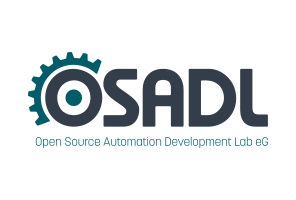Dates and Events:
|
OSADL Articles:
2023-11-12 12:00
Open Source License Obligations Checklists even better nowImport the checklists to other tools, create context diffs and merged lists
2022-07-11 12:00
Call for participation in phase #4 of Open Source OPC UA open62541 support projectLetter of Intent fulfills wish list from recent survey
2022-01-13 12:00
Phase #3 of OSADL project on OPC UA PubSub over TSN successfully completedAnother important milestone on the way to interoperable Open Source real-time Ethernet has been reached
2021-02-09 12:00
Open Source OPC UA PubSub over TSN project phase #3 launchedLetter of Intent with call for participation is now available |
Real Time Linux Workshops
1999 - 2000 - 2001 - 2002 - 2003 - 2004 - 2005 - 2006 - 2007 - 2008 - 2009 - 2010
Tenth Real-Time Linux Workshop on October 29 to November 1st, 2008, in Guadalajara, Mexico
xmtrace - the XtratuM tracer
Thomas Hisch, Georg Schiesser, Andreas Platschek
A Tracer is a tool used to record the chronological sequence of events in order to analyze the functional and temporal behaviour of software while the system is running. In contrast to using a Debugger there is no need to stop at breakpoints. Instead, previously inserted tracepoints trigger writes into a buer, including both timestamp and location of the occurrence. Tracing can be useful to debug applications while minimizing the distortion on the system's real-time behaviour. Therefore it is a well-established technique especially in the eld of real-time systems.
This paper proposes a tracing tool for XtratuM based on the tracer included in RTLinux/GPL. xmtrace uses statically allocated shared memory to buer timestamp, address and type of events. Both hard-coded system events and user-dened events are supported. xmtrace provides adequate tracepoints in the XtratuM code base for critical functions like scheduling, enabling/disabling interrupts, and acquiring/ freeing spinlocks. Custom events can be added and triggered by the user via a simple interface. Events are grouped into event classes. Single events and event classes can be enabled and disabled as required, which makes the Tracer very flexible.
In this paper design and implementation of xmtrace are described, including adequate tracing points and problems of debugging real-time applications. Finally, standard usage scenarios are evaluated and comparative benchmarks interpreted.
This article proposes a RTSJ-based API for sensor networks which deploys at the embedded of the sensor node using PaRTiKle Operating System. As use case, an application with different nodes on a heterogeneous network is proposed.




